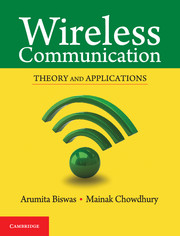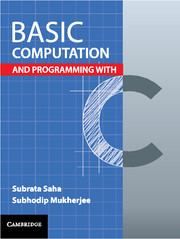Refine search
Actions for selected content:
37588 results in Cambridge Textbooks
19 - Light Intensity and Absorption
- from Part II - Stellar Structure and Evolution
-
- Book:
- Fundamentals of Astrophysics
- Published online:
- 10 November 2025
- Print publication:
- 24 July 2025, pp 128-136
-
- Chapter
- Export citation
21 - Stigma in Global Context
- from Part III - Mental Health Systems and Policy
-
-
- Book:
- Sociology of Mental Health
- Published online:
- 18 September 2025
- Print publication:
- 24 July 2025, pp 345-360
-
- Chapter
- Export citation
Appendix D - Radiative Transfer
-
- Book:
- Fundamentals of Astrophysics
- Published online:
- 10 November 2025
- Print publication:
- 24 July 2025, pp 291-294
-
- Chapter
- Export citation
Appendices
-
- Book:
- Fundamentals of Astrophysics
- Published online:
- 10 November 2025
- Print publication:
- 24 July 2025, pp 279-294
-
- Chapter
- Export citation
2 - Astronomical Distances
- from Part I - Stellar Properties
-
- Book:
- Fundamentals of Astrophysics
- Published online:
- 10 November 2025
- Print publication:
- 24 July 2025, pp 11-18
-
- Chapter
- Export citation
1 - Introduction
- from Part I - Stellar Properties
-
- Book:
- Fundamentals of Astrophysics
- Published online:
- 10 November 2025
- Print publication:
- 24 July 2025, pp 3-10
-
- Chapter
- Export citation
11 - Black American Women and Mental Well-Being
- from Part II - The Social Context of Mental Health and Illness
-
-
- Book:
- Sociology of Mental Health
- Published online:
- 18 September 2025
- Print publication:
- 24 July 2025, pp 185-200
-
- Chapter
- Export citation

Wireless Communication
- Theory and Applications
-
- Published online:
- 21 July 2025
- Print publication:
- 16 January 2017
-
- Textbook
- Export citation

Basic Computation and Programming with C
-
- Published online:
- 17 July 2025
- Print publication:
- 24 May 2016
-
- Textbook
- Export citation

Fundamentals of Machine Design
-
- Published online:
- 17 July 2025
- Print publication:
- 29 May 2017
-
- Textbook
- Export citation

Fundamentals of Electrical Engineering
-
- Published online:
- 16 July 2025
- Print publication:
- 10 November 2016
-
- Textbook
- Export citation

Non-Relativistic Quantum Mechanics
-
- Published online:
- 16 July 2025
- Print publication:
- 17 April 2017
-
- Textbook
- Export citation

Economics for a Sustainable World
- An Introduction to Natural Resource and Environmental Economics
-
- Published online:
- 14 July 2025
- Print publication:
- 12 June 2025
-
- Textbook
- Export citation
Appendix
-
- Book:
- English Phonetics and Phonology
- Published online:
- 17 October 2025
- Print publication:
- 10 July 2025, pp 197-206
-
- Chapter
- Export citation
Chapter 12 - Speech Rhythm
-
- Book:
- English Phonetics and Phonology
- Published online:
- 17 October 2025
- Print publication:
- 10 July 2025, pp 161-171
-
- Chapter
- Export citation
Chapter 8 - Phonemes and Allophones
-
- Book:
- English Phonetics and Phonology
- Published online:
- 17 October 2025
- Print publication:
- 10 July 2025, pp 109-121
-
- Chapter
- Export citation
Chapter 6 - Acoustic and Auditory Phonetics
-
- Book:
- English Phonetics and Phonology
- Published online:
- 17 October 2025
- Print publication:
- 10 July 2025, pp 79-94
-
- Chapter
- Export citation
Chapter 9 - Phonological Processes
-
- Book:
- English Phonetics and Phonology
- Published online:
- 17 October 2025
- Print publication:
- 10 July 2025, pp 122-132
-
- Chapter
- Export citation
Chapter 1 - Sounds of Language
-
- Book:
- English Phonetics and Phonology
- Published online:
- 17 October 2025
- Print publication:
- 10 July 2025, pp 1-14
-
- Chapter
- Export citation
Chapter 5 - Diphthongs and Pre-rhotic and Weak Vowels
-
- Book:
- English Phonetics and Phonology
- Published online:
- 17 October 2025
- Print publication:
- 10 July 2025, pp 67-78
-
- Chapter
- Export citation
